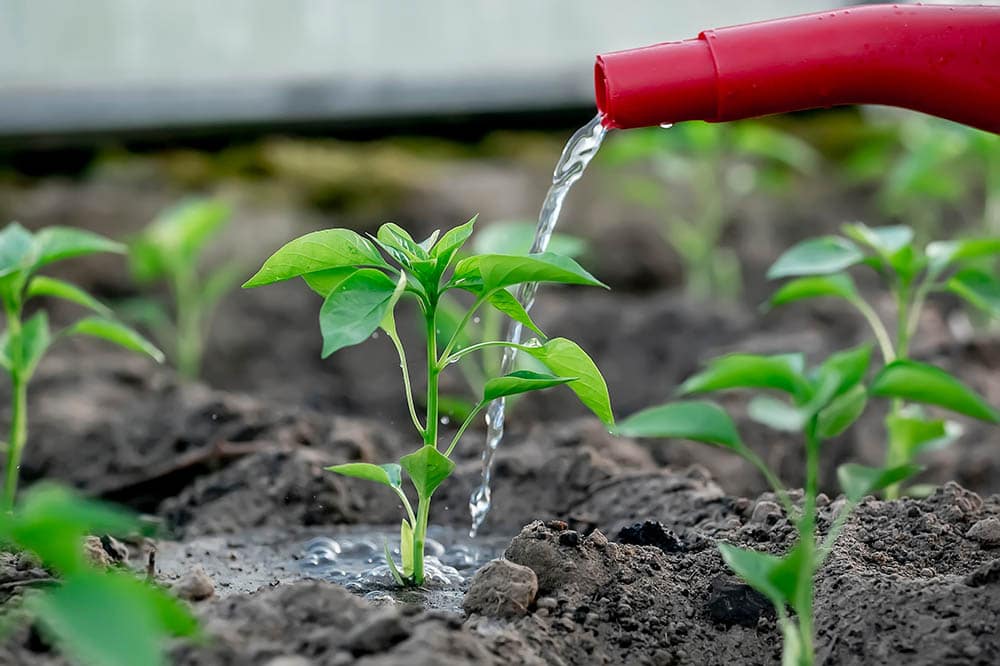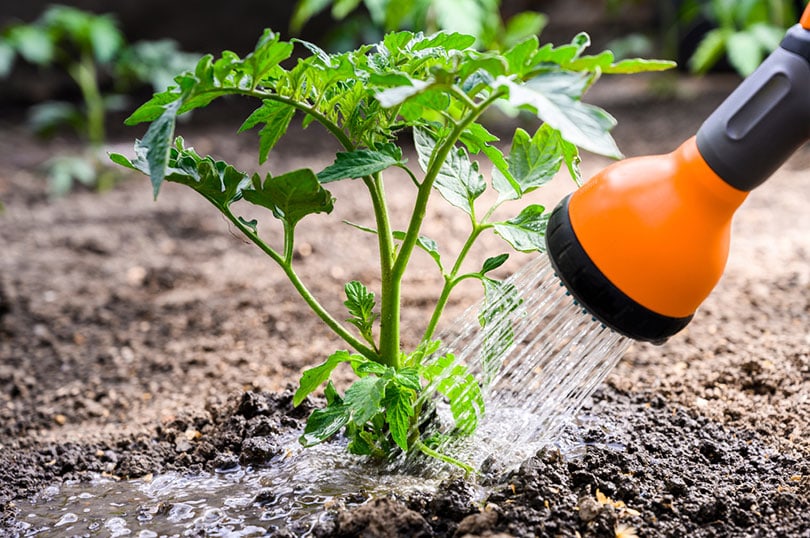How Much Water Does It Take to Grow a Watermelon? Signs & Soil Types
-

- Last updated:

There is no better feeling during the summertime than eating fresh watermelon. This fruit is one of the most adored summertime treats, and growing them in your garden is a great idea. Many factors are essential when cultivating watermelons, especially knowing how much water to provide them. It is very easy to make a wrong choice and overwater the watermelons or underwater them. That is why knowing the exact amount of water is crucial, and the amount of water needed depends on the current stage of growth of the plant. Once you have read this article, you will be able to grow watermelons effortlessly.

When to Plant Watermelons

Whatever your location may be, the planting time of watermelons will have to depend mainly on the climates of your particular region. The optimal time to plant watermelons will be 2–3 weeks after the last frost in your area. Once this period passes, you can plant the watermelon seeds in a soilless potting mix indoors. It is crucial to begin growing watermelons indoors to keep them warm and moist until the outdoor temperatures are suitable for the thriving of this plant. Wait until the outdoor temperatures are constant at 50°F or warmer and don’t transplant the seeds too early. Once watermelons are transplanted outside, they don’t like to be moved.
If the soil temperature reaches 65°F, you can sow the watermelons directly into the ground. You can plant the seeds up to 1 inch deep, with two or three seeds in one group. Once the seeds begin to germinate and become established, you can remove the others and leave the best watermelon to thrive in the group.
What Type of Soil Is Ideal for Growing Watermelons?
To achieve the most optimal soil for growing watermelons, you must ensure the soil is well-drained and preferably sandy. The vines of the watermelon plants will thrive best in evenly moist soil. To keep the soil at the perfect moisture level, it would be good to provide it with a 2-inch layer of organic fertilizer once the vines become about 8 inches long would be good. The pH level has to be on the verge of perfect, between 6.0 and 6.5, and before adding any fertilizer, it is vital to test the soil’s pH levels first.
How Much Water Do Watermelons Need to Thrive?

Watermelons prefer to thrive in evenly moist soil, so be careful with how much water you provide them and how often. Before the vines produce any visible watermelons, you must provide them with 2 inches of water per week (around 500ml). Once the first watermelons appear on the vines, reduce the water levels to 1 inch (250ml) per week. When watering the vines, it is essential to water the base deeply and avoid watering the leaves and fruit. If they become wet, you can risk the burning of the leaves and fruit if they get too much sun exposure during the day.
Signs Your Watermelons Require More Water
You can follow many signs to notice when your plants crave more water. When the leaves begin to turn yellow, it can mean that the plant is not receiving enough water, although this sign can be misleading as yellowing leaves can also occur due to too much water in the soil. When more water is needed, the leaves will be dry to the touch. That is why it is essential to check the soil frequently and whether it is dry or soggy. A vital sign can be whether the top 1 or 2 inches of the soil is dry.
Another clear sign of your plant needing more water is its slow growth. Suppose it’s been a while since the last development of new flowers or fruits. Keep the soil moist equally and constantly without creating a wet environment.
What Happens When You Overwater Watermelons?
When watering watermelon plants, it is equally important to water them properly and avoid overwatering them. It is essential to look for signs of the overwatered plant, such as soggy soil that cannot absorb water. Another common sign of overwatered watermelons is yellowing, wilting leaves, and even watermelons splitting on the vines. If this happens, you may be overwatering your watermelon plant, which can quickly lead to root rot.

Conclusion
After learning the correct way to water your plants, you can hopefully create a perfect environment for your watermelons to grow healthy, strong, and thriving. Gardening will become a much more fun experience when you notice the crucial signs in time and act on them to help your watermelons thrive.
Featured Image Credit: dimitrisvetsikas1969, Pixabay
Contents
